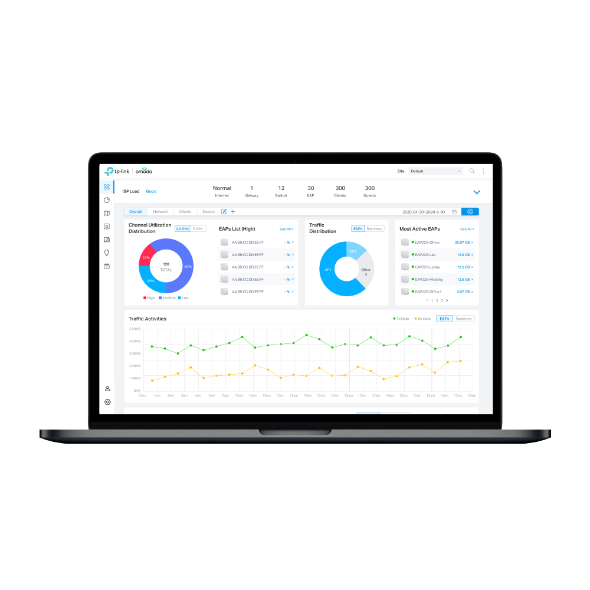Why my Omada controller cannot manage the latest EAP?
If you are using Omada controller 3.x.x, you may meet the problem that cannot manage the latest EAP. You can follow this article to find the reason and solution.
TP-link launches Omada’s Software-Defined Networking (SDN) platform in July 2020. The platform integrates network devices, including access points, switches and gateways, providing 100% centralized cloud management. For the new model EAP and new firmware for old EAP that published after July 2020, they are fully adapted to the Omada SDN platform, and they are not compatible with the old Omada controller. So if you are using the old Omada controller, you cannot manage the new model EAP or some old EAP that update to the latest firmware.
The following is the Omada SDN compatibility List and the old Omada controller 3.x.x cannot manage them.
Omada SDN compatibility List
New EAP model
If you are using the TP-Link for the first time, it is strongly recommended to use the Omada SDN solution directly to obtain a rich product experience.
If you are a regular TP-Link user and using the old Omada controller, when you buy the latest EAP and install in your network, you may meet the problem that cannot manage the EAP. You can choose to update your network to support Omada SDN platform or keep using the old Controller to manage EAPs.
1. Update your network to support Omada SDN platform.
- If all EAPs in your current network are on the compatibility list, you can upgrade all EAPs to support Omada SDN controller.
You can follow the Upgrade Guide to upgrade Controller and your EAPs. Then use Omada SDN controller to manage all of your EAPs including newly purchased EAP.
Upgrade Guide: https://www.tp-link.com/en/omada-sdn/controller-upgrade
- If only a part of your EAPs in current network is on the compatibility list, you still can install Omada SDN controller to manage this part of EAP and the newly purchased EAP.
You can install the Omada SDN controller, then follow the Upgrade Guide to migrate the EAP on the compatibility list to Omada SDN controller. The newly purchased EAP can be managed by Omada SDN controller directly. For other EAPs that are not compatible with Omada SDN platform, they can be still managed by the old Omada controller.
- If none of your EAPs in current network is on the compatibility list, you can install Omada controller to manage the newly purchased EAP.
The newly purchased EAP can be managed by Omada SDN controller directly. For other EAPs that are not compatible with Omada SDN platform, they can be still managed by the old Omada controller.
2. Keep using the old Omada controller.
- If your newly purchased EAP is EAP245/EAP225/EAP115/EAP110/EAP225-Wall/EAP115-Wall/EAP225-Outdoor/EAP110-Outdoor and the EAP uses the firmware that support Omada SDN platform, you can choose to downgrade the EAP to the firmware that supports the old Omada controller. You can downgrade EAP in batches through Omada SDN controller, or downgrade EAP one by one through EAP’s standalone mode.
- If your newly purchased EAP is EAP660HD/EAP620HD/EAP265HD/EAP235-Wall/EAP230-Wall, then you can only install Omada SDN controller to manage them because they are not compatible with the old Omada controller. For other EAPs in your network, they can be still managed by the old Omada controller.
PS:
1. If your newly purchased EAPs are not on the above compatibility list or new EAP model list, you can still use old Omada controller to manage them.
2. If you need to install the Omada SDN controller, please install on a new computer because we cannot install two controllers on the same computer.
Is this faq useful?
Your feedback helps improve this site.
TP-Link Community
Still need help? Search for answers, ask questions, and get help from TP-Link experts and other users around the world.












4.0-F_normal_1593323197059j.png)
